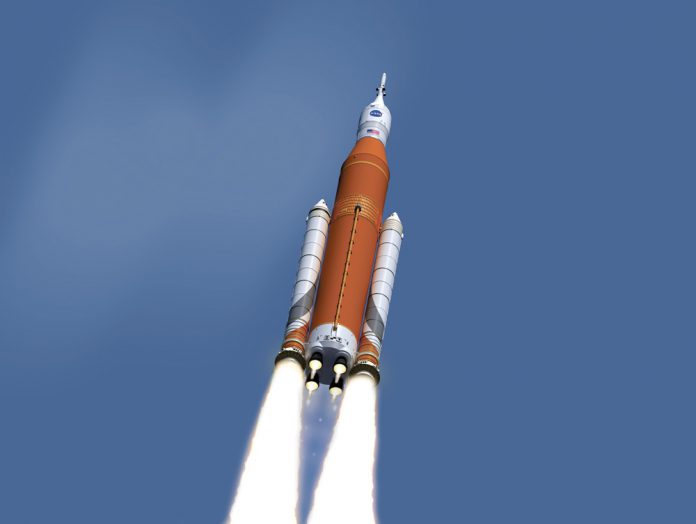Janani Ruvikumar
Staff Writer
The National Aeronautics and Space Administration is building a new spacecraft, Orion, to help usher in a new era of space exploration. Orion will help NASA prepare for missions to Mars by traveling thousands of miles beyond the moon over the course of a three-week mission.
Orion was named after one of the largest constellations in the sky. NASA hopes it will be the safest, most advanced spacecraft ever built; being flexible and capable enough to take us far through space for decades to come.
Although it will not have humans aboard its first flight, the Space Launch System (SLS) can provide emergency abort capability, sustain crews during space travel, and provide safe re-entry to Earth from deep space return velocities.
According to phys.org, the Orion module, in line for NASA’s Exploration Mission-1 (EM-1), has passed the necessary proof pressure tests, confirming the effectiveness of the welds holding the spacecraft together. On February 1, 2016, the vessel was moved to the Neil Armstrong Operations and Checkout Building after flying to the Kennedy Space Center inside NASA’s Super Guppy aircraft. Advanced technicians and engineers have been working diligently to attach hundreds of strain gauges to the interior and exterior surfaces of Orion to prepare it for pressure tests, providing real time data to the analysts monitoring changes during pressurization.
Prime conductor Lockheed Martin engineers incrementally increased the pressure in a proof pressure cell to carefully monitor how the spacecraft reacted to the stresses brought on by pressure increases over the course of two days. When engineers locked Orion behind these large doors, it reached its maximum pressure, which is 1.25 times the normal atmosphere pressure. This pressure is more than Orion’s expected to encounter in orbit and during re-entry.
According to Space News, NASA is aiming for a launch date sometime in November of 2018 for the SLS and Orion. Other program managers hope to be able to launch these systems up two months earlier. This will be another big year for space exploration.
“The agency’s baseline commitment is November of 2018,” said Mike Bolger, manager of the Ground Systems Development and Operations (GSDO) program, according to Space News. “We’ve talked internally about the September deadline, and have pressed them to see if we can make it by that time. It gives us a little margin at the end.”
The Kennedy Space Center in Florida will launch the SLS and Orion, according to NASA’s official website. Then, the spacecraft will deploy its solar arrays and the SLS upper stage, called the Interim Cryogenic Propulsion Stage (ICPS). This will give Orion the push it needs to leave Earth’s orbit and travel toward the moon. From that point, Orion will travel separate from the ICPS, which will deploy small satellites called CubeSats to perform experiments and technology demonstrations.
A service module provided by the European Space Agency will propel Orion. This will supply the spacecraft’s main power and propulsion system as it continues on its path to the moon. The spacecraft will then pass through the Van Allen radiation belts, past the Global Positioning System (GPS) satellite constellation, and above Earth’s communication satellites.
Orion will switch from data communication with NASA’s Tracking and Data Relay System satellites to mission control in Houston. This will mark the first time in decades that a spacecraft will communicate through the Deep Space Network.
Orion will stay in this orbit for about six days, traveling in a direction around the moon retrograde from the direction the moon travels around Earth. This will allow mission controllers to assess the spacecraft’s performance and collect data.
Ideally, this launch will allow NASA to practice deep-space operations with decreasing reliance on Earth and potentially make a human journey to Mars a reality.
“This is a mission that truly will do what hasn’t been done and learn what isn’t known,” said the EM-1 mission manager at NASA Headquarters in Washington, according to NASA’s official site. “It will blaze a trail that people will follow on the next Orion flight, pushing the edges of the envelope to prepare for that mission.”











